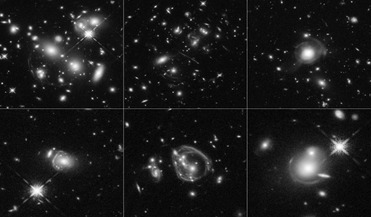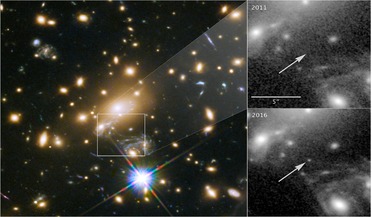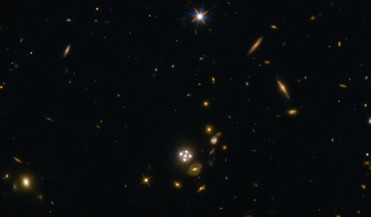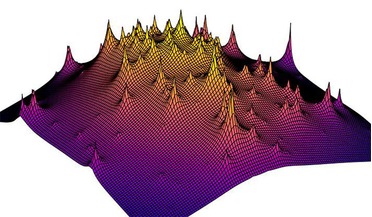 07 June 2017
Rare, massive, starburst galaxies captured in detail by Hubble
07 June 2017
Rare, massive, starburst galaxies captured in detail by Hubble
... in random parts of the sky that nobody's looked at before in detail. That's why finding that they are gravitationally lensed is so important." One suggestion is that the material needed to make the stars is flooding into the faraway galaxies...
 03 April 2018
Astronomers unexpectedly find the most distant star ever discovered
03 April 2018
Astronomers unexpectedly find the most distant star ever discovered
...spot, however the international team of astronomers that found it had a helping hand from an effect known as gravitational lensing. Gravitational lensing occurs when the mass in a foreground object such as a galaxy, magnifies the light from a fainter...
 27 January 2017
Distant quasars help refine the rate of the expanding Universe
27 January 2017
Distant quasars help refine the rate of the expanding Universe
... of the expansion of the Universe is a hotly debated subject and now a new measurement by the H0LiCOW collaboration using gravitationally-lensed quasars, contradicts that made using other methods and the discrepancy could hint at "new physics" beyond...
 03 March 2017
Dark Matter Map revealed by researchers
03 March 2017
Dark Matter Map revealed by researchers
... with data from the Hubble Space Telescope Frontier Fields program, used information from gravitationally-lensed galaxies. A gravitational lens is a distribution of matter, in this case a trio of distant galaxies, between an observer and a far-away...
 21 July 2021
New balloon-borne astronomical telescope to rival Hubble
21 July 2021
New balloon-borne astronomical telescope to rival Hubble
... is invisible, astronomers can map the way it bends rays of light via a technique known as gravitational lensing. SuperBIT will use strong and weak lensing to map out the distribution of dark matter around hundreds of galaxy clusters and test...
 March 2018
Mapping the dark universe
March 2018
Mapping the dark universe
... sky. Among these cosmological probes, two play a major role in the Euclid mission concept - Weak Gravitational Lensing (WL) and Galaxy Clustering (including Baryon Acoustic Oscillations) to address the following questions in the area of cosmology...